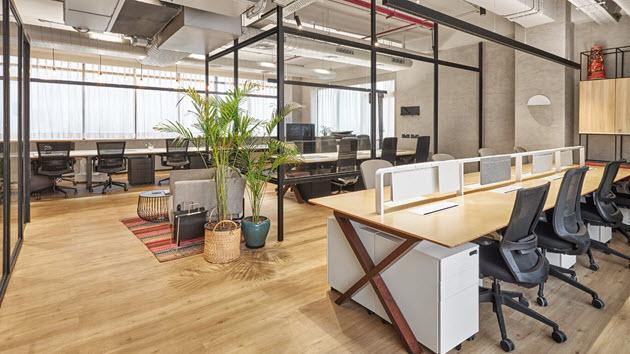Have you ever wondered why some people thrive in certain work environments while others struggle to stay focused? The design of your workspace can have a significant impact on your productivity, creativity, and overall well-being. In this article, we’ll explore the psychology of office space design and how your workspace affects your productivity.
The Impact of Lighting
Lighting is an essential element of office space design that can influence your mood and productivity. Natural light has been linked to increased productivity and higher job satisfaction, while poor lighting can lead to eye strain, headaches, and fatigue.
To optimize your workspace, try to maximize natural light as much as possible. If your office lacks windows or access to natural light, consider investing in full-spectrum lighting that mimics the effects of natural light. Additionally, avoid harsh, fluorescent lighting that can cause glare and eye strain.
The Importance of Color
Colors can evoke specific emotions and feelings, which can impact your productivity and creativity. For example, blue is known to promote calmness and productivity, while red can increase heart rate and create a sense of urgency.
To create a productive workspace, consider incorporating blue and green hues, which are associated with calmness and focus. Additionally, avoid overwhelming your workspace with too many bright colors or patterns, as they can be distracting and overwhelming.
The Role of Comfort
Physical comfort is essential for productivity and well-being in the workplace. Poor ergonomics, uncomfortable chairs, and inadequate climate control can all negatively impact productivity and contribute to physical discomfort.
To create a comfortable workspace, invest in ergonomic furniture, such as adjustable chairs and desks that can be customized to your specific needs. Additionally, consider the temperature and air quality of your workspace. Poor air quality can lead to headaches, fatigue, and reduced cognitive function, while a comfortable temperature can help improve focus and productivity.
The Impact of Noise
Noise can also significantly impact your productivity and well-being. Loud or distracting noises can be a significant source of stress and reduce your ability to concentrate. On the other hand, too much silence can be just as distracting, as it can make small noises more noticeable.
To optimize your workspace, consider incorporating white noise or background music to reduce distractions and improve focus. Additionally, consider using soundproofing materials to reduce noise from nearby offices or outdoor sources.
The Benefits of Personalization
Personalization can play a significant role in creating a productive workspace. Incorporating personal items or decorations can improve mood, motivation, and overall job satisfaction. Additionally, personalization can help create a sense of ownership and pride in your workspace, which can lead to increased productivity and creativity.
To incorporate personalization into your workspace, consider adding family photos, artwork, or plants. Additionally, invest in storage solutions that allow you to keep your workspace organized and clutter-free.
The Role of Layout
The layout of your workspace can also impact your productivity and well-being. An open layout can encourage collaboration and creativity, but it can also be distracting and noisy. On the other hand, a closed layout can provide privacy and reduce distractions, but it can also lead to isolation and reduce collaboration.
To optimize your workspace, consider a layout that balances both privacy and collaboration. Consider adding private areas for individual work or meetings while also creating open spaces for group collaboration.
Key Takeaway
In conclusion, the design of your workspace can significantly impact your productivity, creativity, and overall well-being. By prioritizing natural light, comfortable furniture, and personalized touches, you can create a workspace that promotes focus, motivation, and job satisfaction. Additionally, by paying attention to the impact of noise, color, and layout, you can create a workspace that optimizes your cognitive function and promotes well-being. Ultimately, the key takeaway is that investing time and resources into creating an optimal workspace can lead to significant improvements in your productivity and overall job satisfaction. By considering the psychological impact of office space design, you can create a workspace that promotes focus, collaboration, and creativity while also promoting physical comfort and well-being. With the right office design, you can transform your workspace into a productive and enjoyable environment that supports your professional and personal goals.

